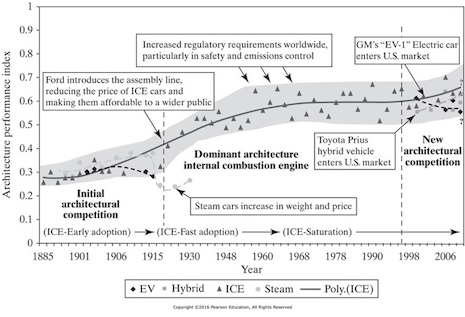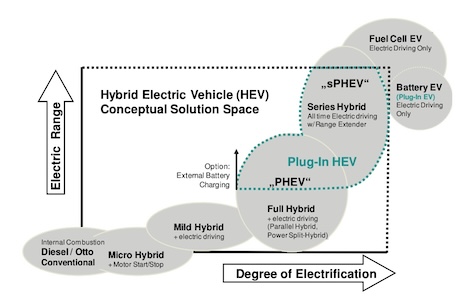Research
Electric Vehicle Architecture
There is an architectural competition in the automotive market today : internal combustion engine (ICE) architectures are competing against hybrid architectures and against battery-electric vehicle (BEV) architectures.
This is not the first time there has been architectural competition in automotive. Gorbea (2011) showcased that there were three competing architectures in the late 1800s : steam-powered architectures, battery-electric vehicle (BEV) architectures, and internal combustion engine architectures. Steam and battery vehicles showed higher market share initialy, before becoming dominated by ICE vehicles. Each of those choices of powerplant reverberated through the design of the vehicle. For example, steam cars has to package both a steam engine, as well as a boiler, sometimes choosing to put the boiler up front and the steam engine under the floor in the rear of the vehicle.

Today, there is substantial debate on whether hybrid architectures will persist long term as the “best of both worlds”, or whether they are simply near-term transitions between the ICE and BEV architectures (The Hybrid Trap, Suarez et al., MIT Sloan Management Review).
MIT is engaged in research on battery electric vehicle architecture with Hyundai, aiming to characterize how many BEV architectures are used in the market today. For example, some of the key architectural decisions may include: number of electric motors, placement of electric motors, battery types, charger power levels, charger standards, etc. This work aims to explore potential BEV architectures, as well as to understand what technology trends could be infused into BEV architectures, and what technology trends could break the BEV architecture. Some of the key changes the occur over time may include battery energy density change, new commercial use cases, new urban mobility sensors, and new machine vision algorithms.





